This theory project was the perfect blend of my passions for backpacking and creativity. As an outdoor enthusiast who loves venturing into the wild and a digital visual artist, I faced the persistent challenge of keeping my electronic batteries charged during long trips and in cold weather. This sparked my journey to validate this problem and explore available solutions—or the glaring lack thereof.
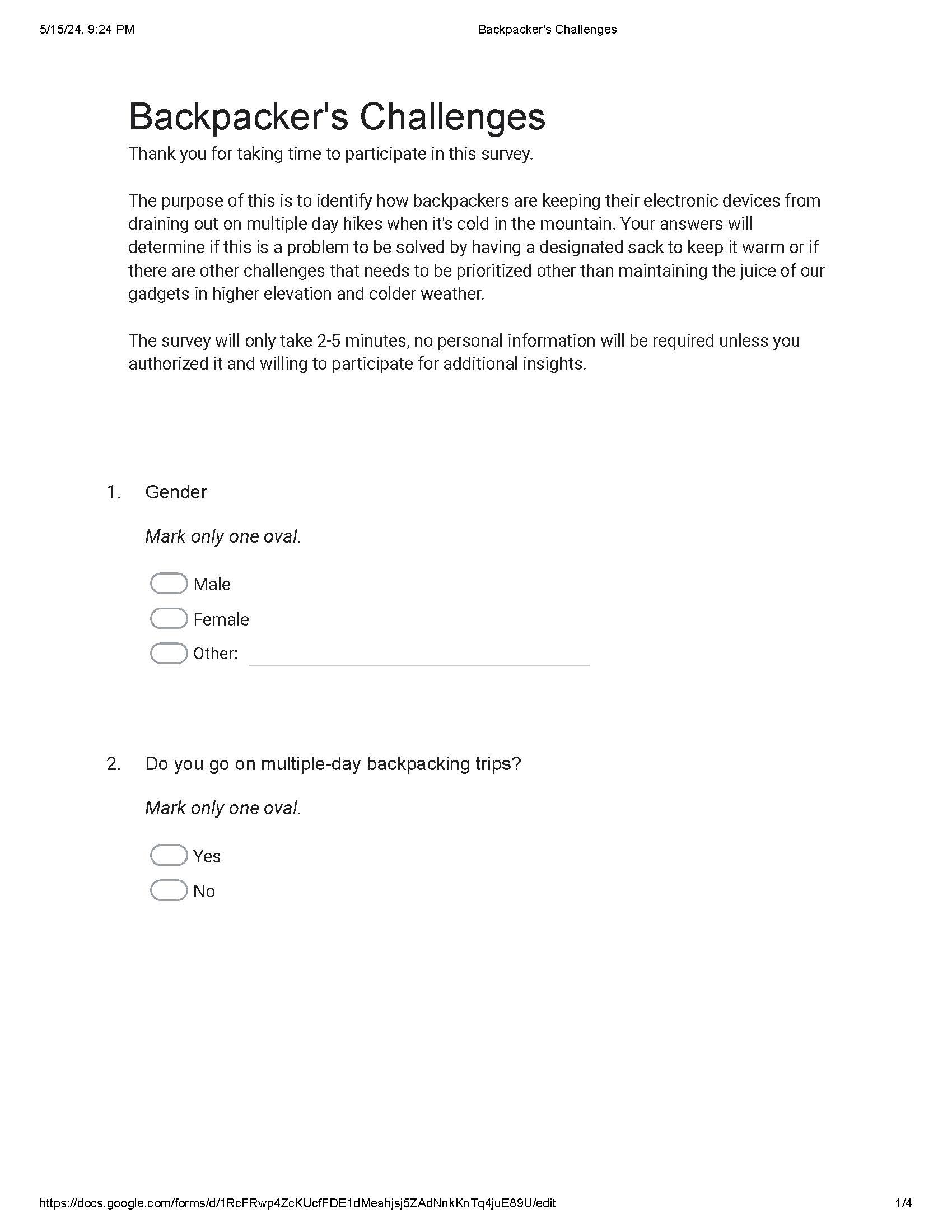
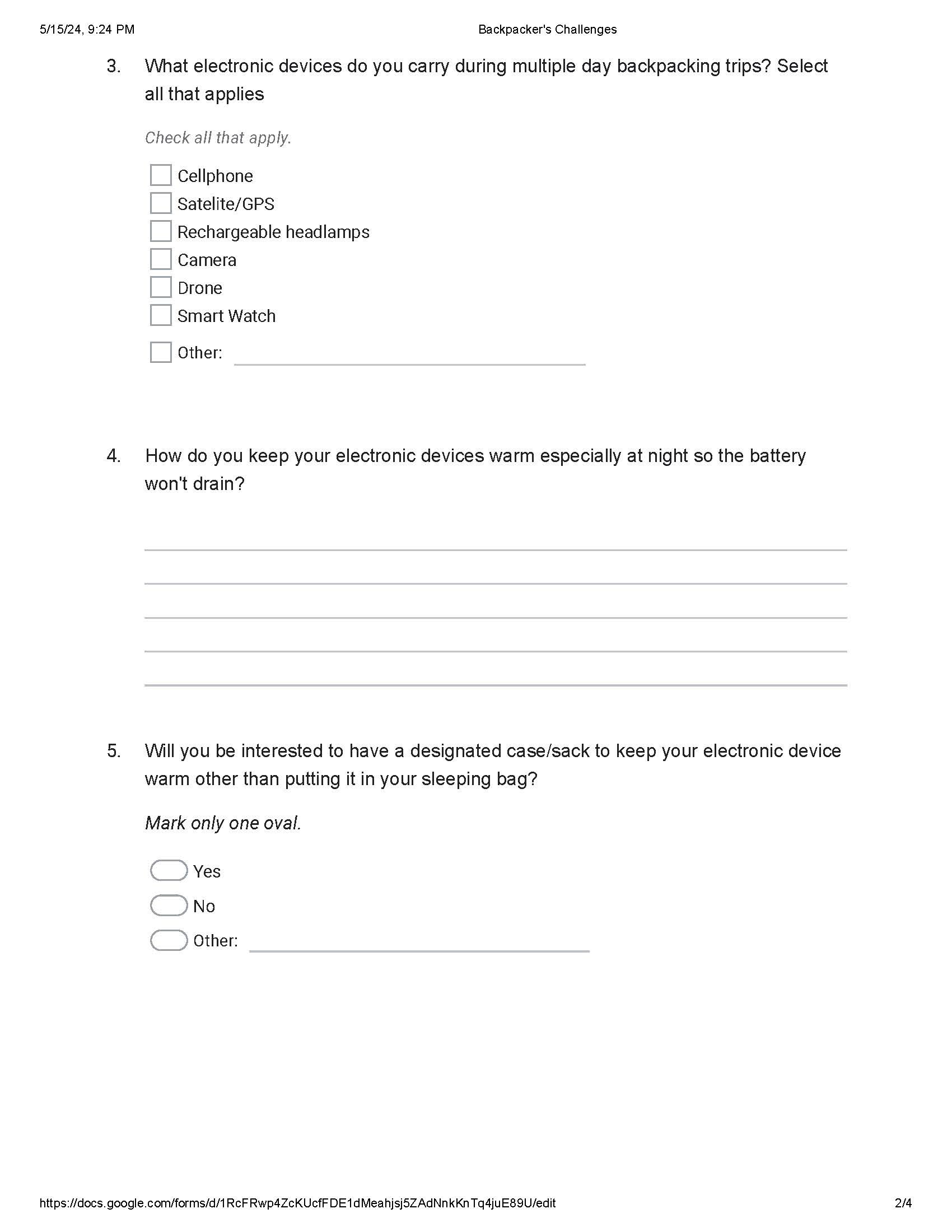

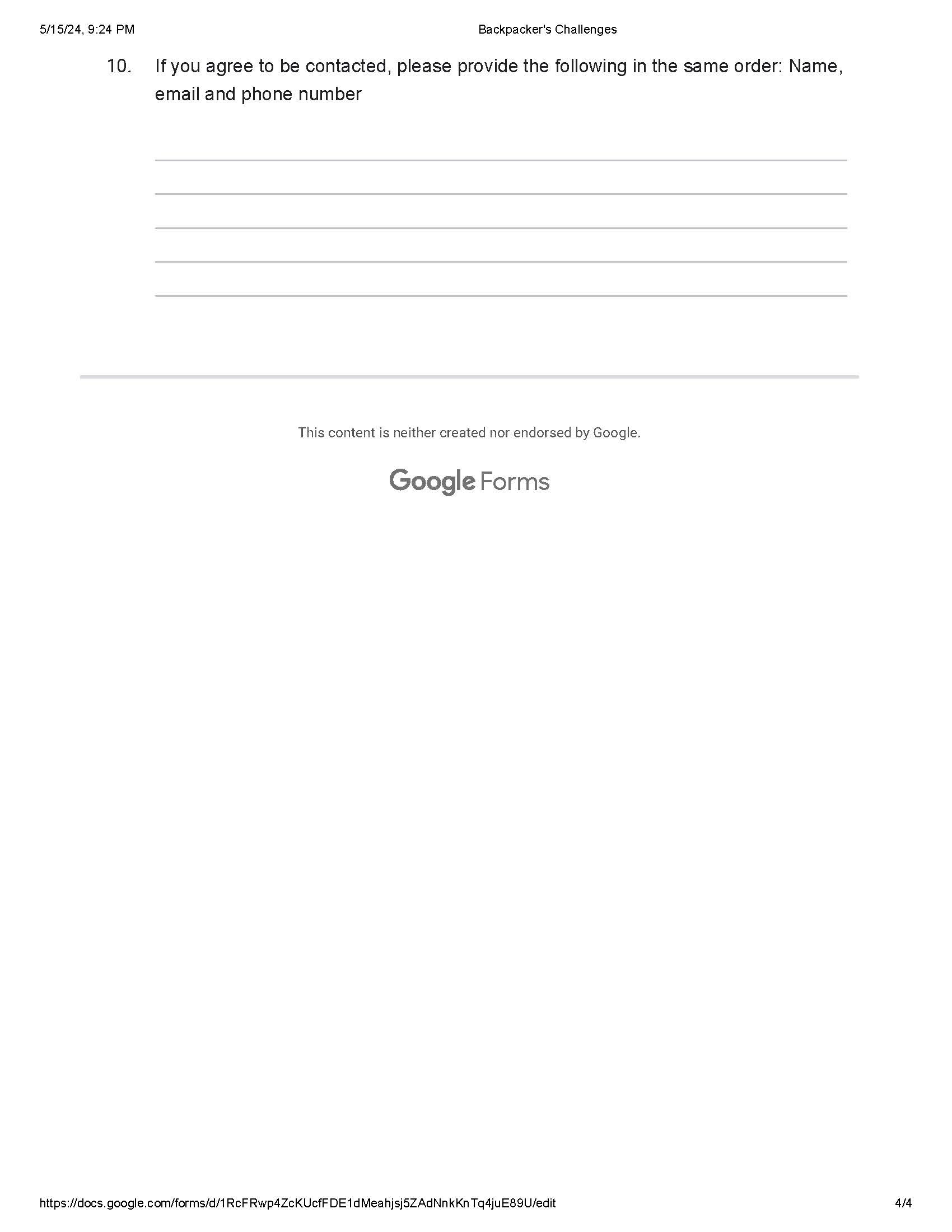
I began building my case by reaching out to backpacking communities through social media, sending out surveys to gather insights. Through this experience, I analyzed that my target market is outdoor content creators—those adventurers who rely on gadgets to capture stunning photos and videos with their cameras and drones, all of which require reliable battery power. The location, climate, weather, and duration of their trips are crucial factors in developing a solution tailored to their needs.



I delved deeper into researching the market and potential revenue streams. Additionally, I explored existing solutions and discovered that most backpackers resort to using their sleeping bags to keep their batteries warm during trips. Surprisingly, there isn't a dedicated container designed to protect these power sources from the cold, ensuring their efficiency. This gap in the market revealed a promising opportunity for innovation.
The persona I developed was shaped by analyzing survey results. The data revealed that while not all multi-day backpackers would support the product, those engaged in digital content creation are the ideal target market. Understanding the specific problem and precisely who you're solving it for is crucial in product development.
Crafting a physical product presents unique challenges compared to developing an app or software. To navigate this terrain, I embarked on another round of research to identify suitable materials for construction. Additionally, I consulted with engineers to gain insight into the necessary steps, associated costs, and feasibility of bringing this product to life. Lastly, I collaborated with a talented graphic designer who transformed my initial sketches into captivating visual artwork, bridging the gap between concept and reality.
Here's a sneak peek at my scribbles—a raw glimpse into my creative process. Imperfect as they may be, they symbolize my determination to push boundaries and seek out the right collaborators, trusting in their expertise to bring my vision to life.
Here's another venture into creativity—a self-designed logo for this project.
Crafting a problem statement encourages a deep dive into the user’s perspective and their pain points, rather than immediately jumping to features or solutions. By understanding precisely what needs to be accomplished and how the target audience feels, we can develop the most effective and tailored solutions.
Crafting a simple yet powerful product vision can significantly boost team morale. It unites everyone toward a common goal, fostering a sense of purpose and collaboration. This was my intention when I created this product vision—to inspire and galvanize the team around our shared objectives.
A product strategy seamlessly complements the vision, providing the team with clear goals and priorities. It illuminates the path forward, ensuring resources are allocated effectively and everyone is aligned and focused on what truly matters.
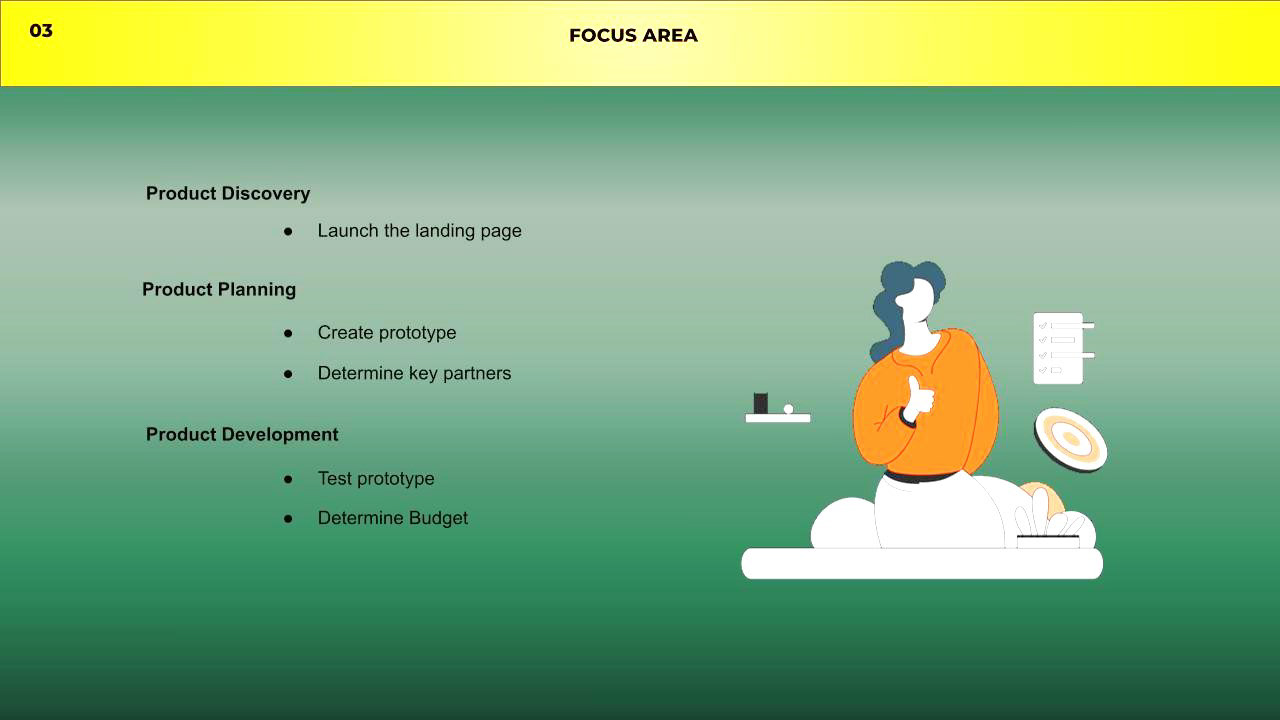
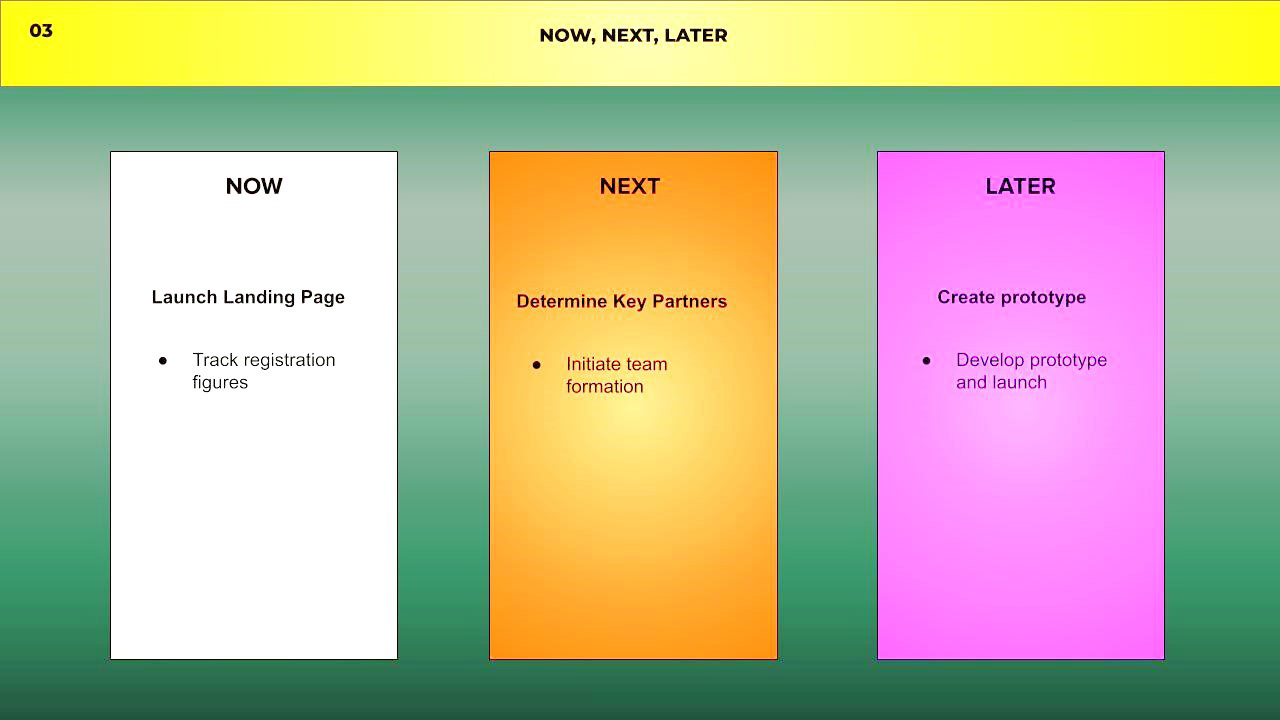

Highlighting focus areas, the road map, and OKRs keeps us on track by clarifying current tasks, future priorities, and how we'll measure our progress. This ensures every action aligns with our ultimate goal of product development.
Crafting a compelling story is integral to product development, and enhancing the narrative with visual arts is a powerful way to capture stakeholders' hearts and minds.
Building an actual prototype can be costly and risky without assurance of public support for a heated pouch for electronic gadget batteries. Instead, I chose to create a landing page. This cost-effective method allows us to test the market by inviting potential customers to sign up. Using Adobe Premiere and XD, I drafted a compelling preview of the landing page.
In conclusion, regardless of whether the product is software, an app, a tangible item, or a service, effective product management is crucial to ensuring its sustainability and success. This project has reinforced the importance of strategic planning, market understanding, and cohesive team efforts in bringing any product to its full potential.

